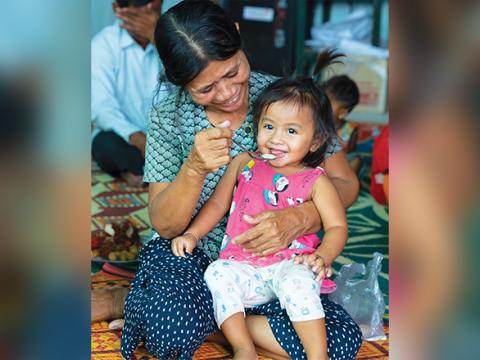Concerns over child malnutrition

World Vision International in Cambodia and Plan International Cambodia (PIC) voiced concerns about the lack of nutrition for children in some provinces who are underweight, stunted and emaciated.
Janes Imanuel Ginting, Country Director for World Vision International in Cambodia, said in a report on Monday that World Vision International continues to work by supporting the most vulnerable children and communities recovering from the COVID-19 crisis.
So far, there are more than 4.5 million people, including more than 1.3 million children, in 14 target provinces and Phnom Penh that have been helped by WVI, he said.
There are 876,700 Cambodian children, who are considered the most vulnerable and 10,197 underweight children, who have been treated for malnutrition, he added.
“We see that after WVI completed the project nutrition programme for children, we have treated around 10,197 children under the age of five with underweight problems ranging from moderate to severe. They have had their health checked up on twice during the project,” he said.
At the end of the project activities, WVI saw that 40% of the children among the 4,571 children had increased their weight, and their health was at a normal level in line with the growth curve, he added.
“WVI has spent $9.4 million on providing and supporting nutrition to cover 649,112 people, including 324,556 children; among those, there were 184,889 children, of whom 60% were vulnerable,” Ginting said.
The Nutrition Programme of WVI has been implemented in 20 districts and eight provinces, comprising Battambong, Banteay Meanchey, Kampong Speu, Kampong Chhnang, Kampong Thom, Kratei, Preah Vihear and Seim Reap provinces, he said.
Yi Kimthan, deputy director of Plan International Cambodia (PIC), said that it has conducted research on malnutrition in children in Stung Treng, Ratanakkiri and Seim Reap provinces.
According to case study data from the Cambodia Demography Health Survey (CDHS), from 2014 to 2022, the rating of stunted children who lack nutrition has decreased from 32% to 22%, and the rating of children who are underweight has decreased from 24% to 16%, while the children who are emaciated remain unchanged, he said.
Children living in Ratanakiri are the most challenged, with 39% and Stung Treng at 29% of emaciated children, according to the national report by CDHS, Kimthan added.
“We see that children who are living in the northeast of Cambodia are lacking nutrition and are still facing some difficulties such as being underweight, emaciated and stunted,” he said.
Plan International has worked closely with the Council for Agricultural and Rural Development (CARD) to handle children who are lacking nutrition by educating them and their families to use clean water and sanitation, Kimthan added.
“We applaud the government’s previous efforts to handle the lack of nutrition among children, but we still urge the government to cooperate with other relevant stakeholders to implement the nutrition programme in provinces with poor nutrition,” he said.
In a separate report by UNICEF in September last year, preliminary results from the 2021 Cambodia Demographic Health Survey showed that while stunted children decreased from 34% to 22% between 2014 and 2021, emaciated children have remained unchanged at 10%.
Wasting, (Malnourishment) is usually related to the socioeconomic status of households, food insecurity, suboptimal child feeding practices, lack of access to safe water, or poor sanitation and hygiene, it said.
Article By: Khmer Times